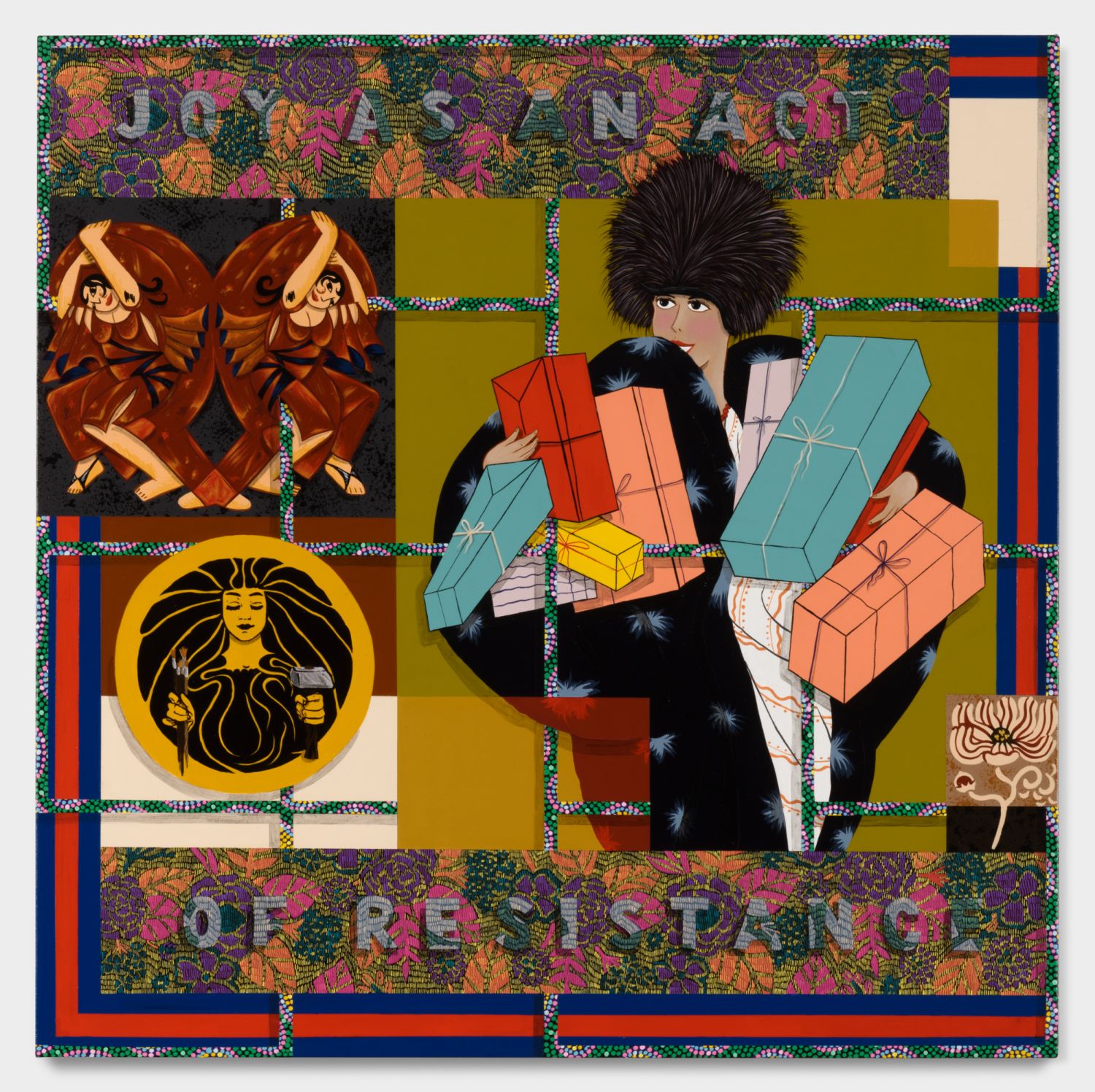Revenge shopping and navigating a third-culture identity inform Amir H. Fallah’s first show in Hong Kong
As for many of us, the highlights of lockdown for artist Amir H. Fallah were mealtimes and receiving packages containing online shopping—the latter event so much so, it sparked the idea behind his first exhibition in Hong Kong, Joy as an Act of Resistance at the newly opened Denny Dimin Gallery in Wong Chuk Hang. Recently, he says, “I came across an old image of a smiling woman with shopping bags; it reminded me of Amazon boxes that show up at your house or when you get food deliveries. These are moments of temporary joy you find in absolute misery.”
Between the pandemic, civil unrest, intense elections around the world and rampant wildfires, there has certainly been a lot to be miserable about in recent years. For Fallah, finding small moments of joy was “a way to fight this non-stop wave of bad news, bad feelings and dread”. Perhaps choosing to feel joy as an act of resistance is just the antidote we need.

It was after the conception of the show that Fallah encountered revenge shopping—a phenomenon revived due to the pandemic of splurging on goods to make up for the lack of travel and recreation. Fallah captures this idea, and the feeling of contentment a new purchase brings, in the exhibition’s namesake painting. A luxuriously dressed woman overloaded with shopping bags and gift boxes emerges as the central figure in Joy as an Act of Resistance. Unlike his previous works, the character’s face is visible here.
Fallah’s best-known works are his portrait paintings, which are typically characterised by bright colours and intricate details, and feature a signature collage-like aesthetic and “veiled” subject matter. Well known pieces such as Offerings at the Altar (2017) and A Distorted Reality is Now A Necessity To Be Free (2019) depict figures with a cloth draped over their head covering most of their body, often surrounded by or holding objects which hint at their identities. This way Fallah reveals the subject’s identity without relying on their physical features, as seen in The Way (2022) and The Artifact (2022), two new works featured in the Hong Kong show.






